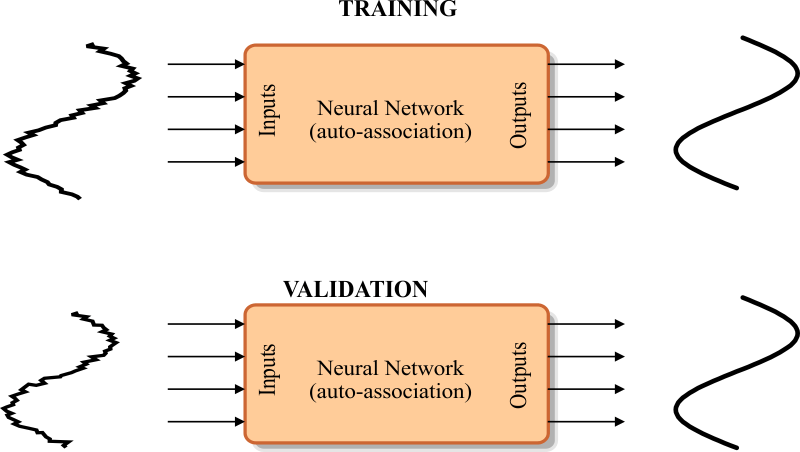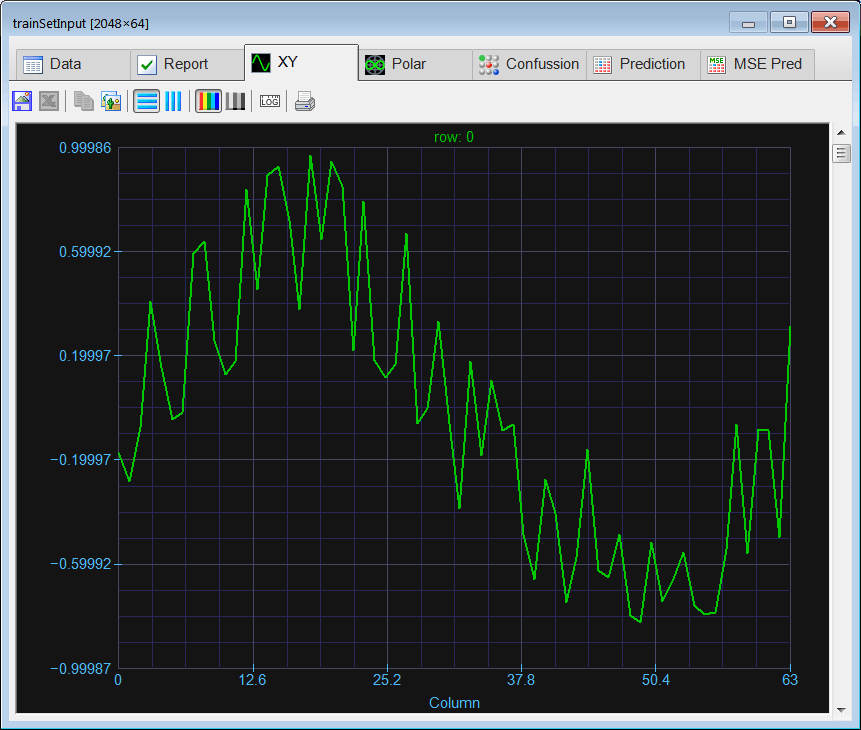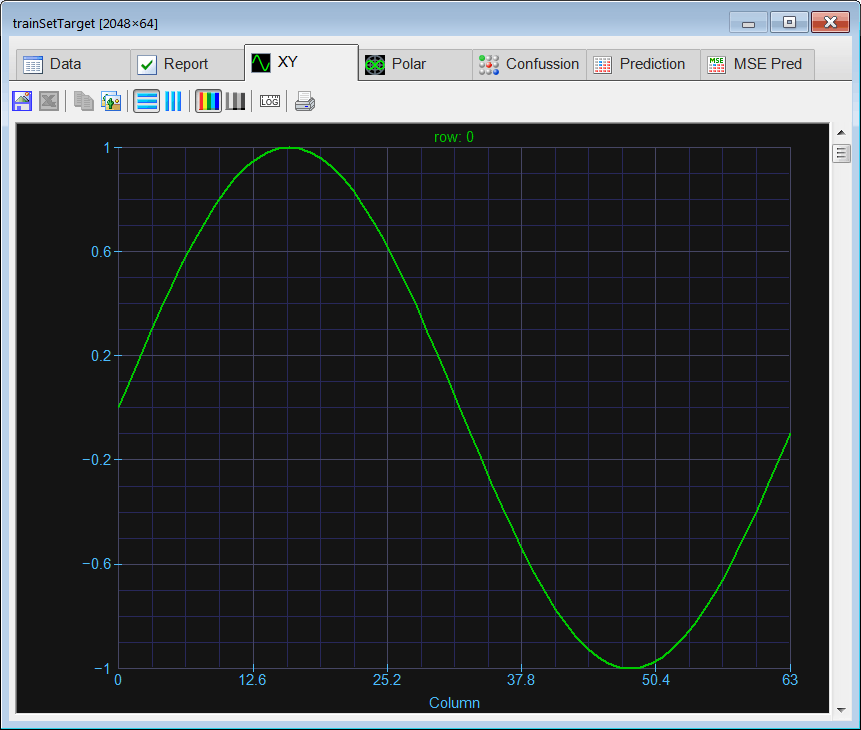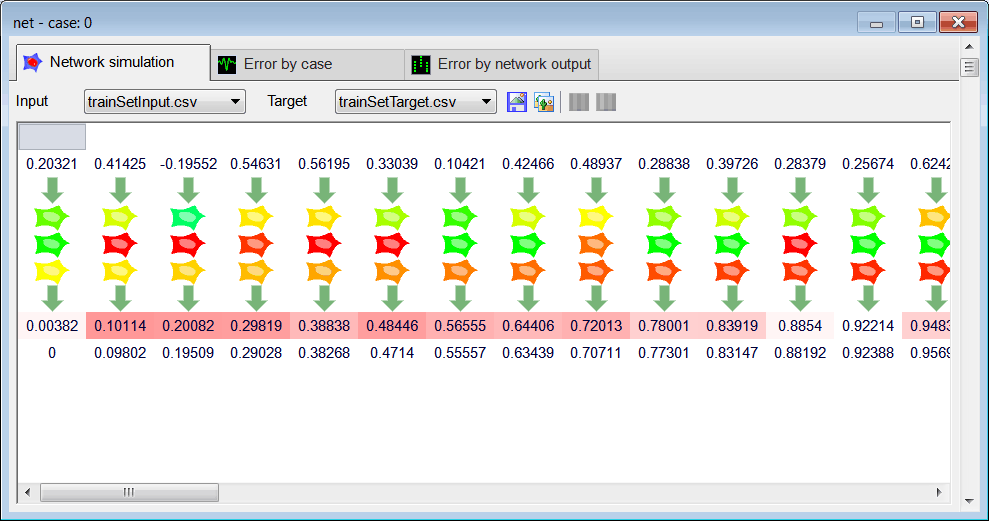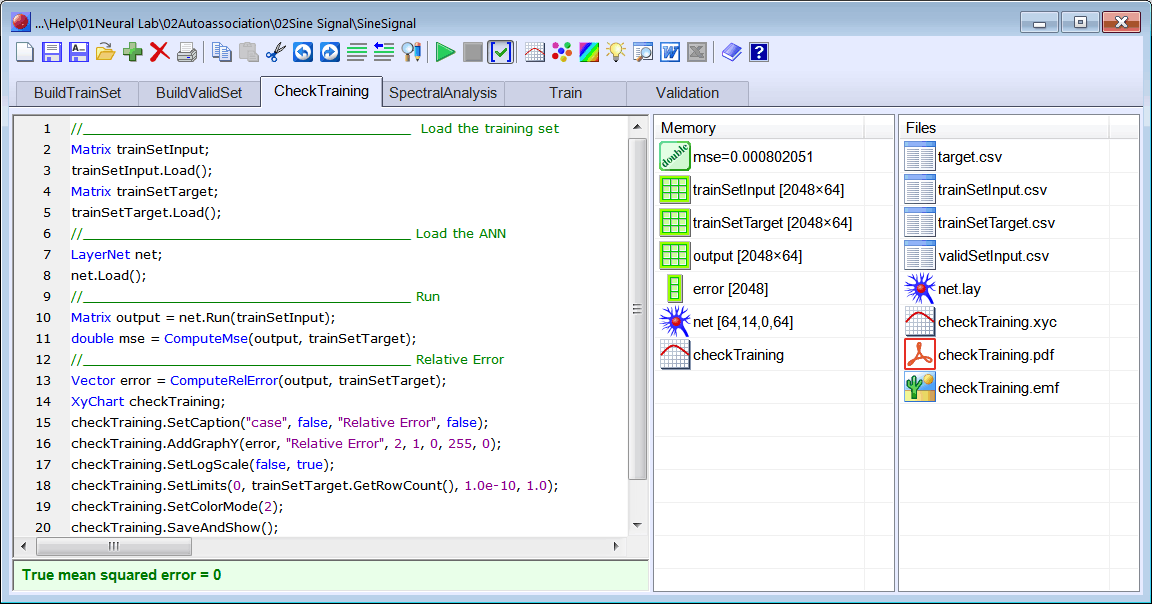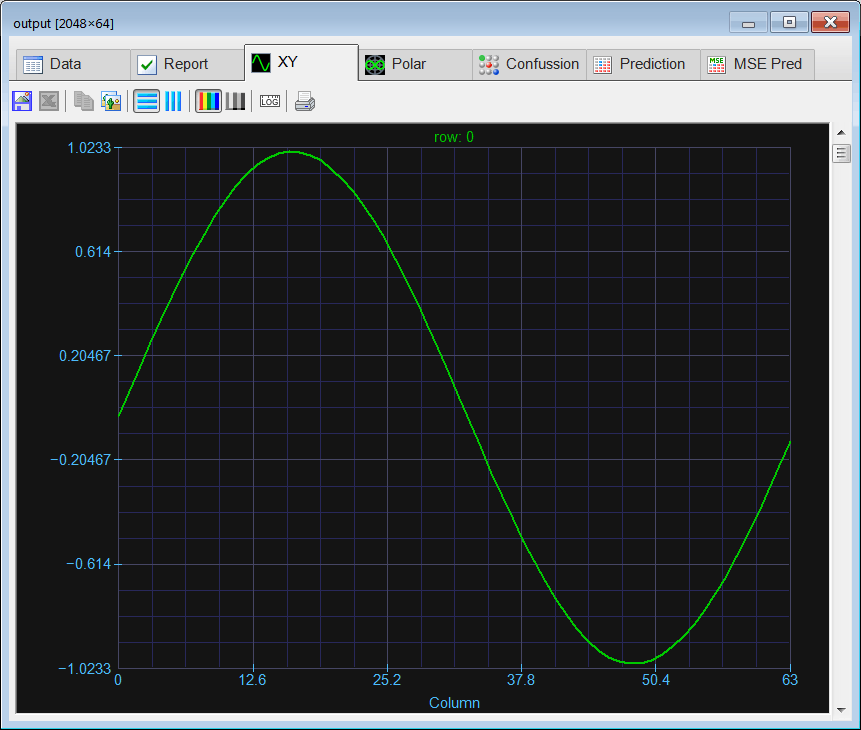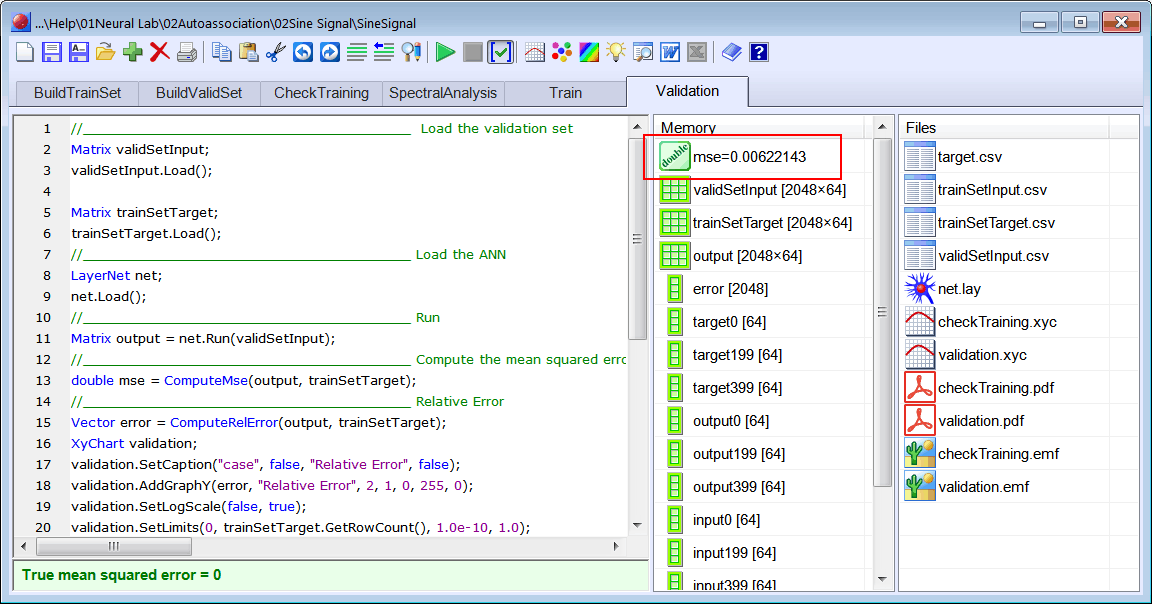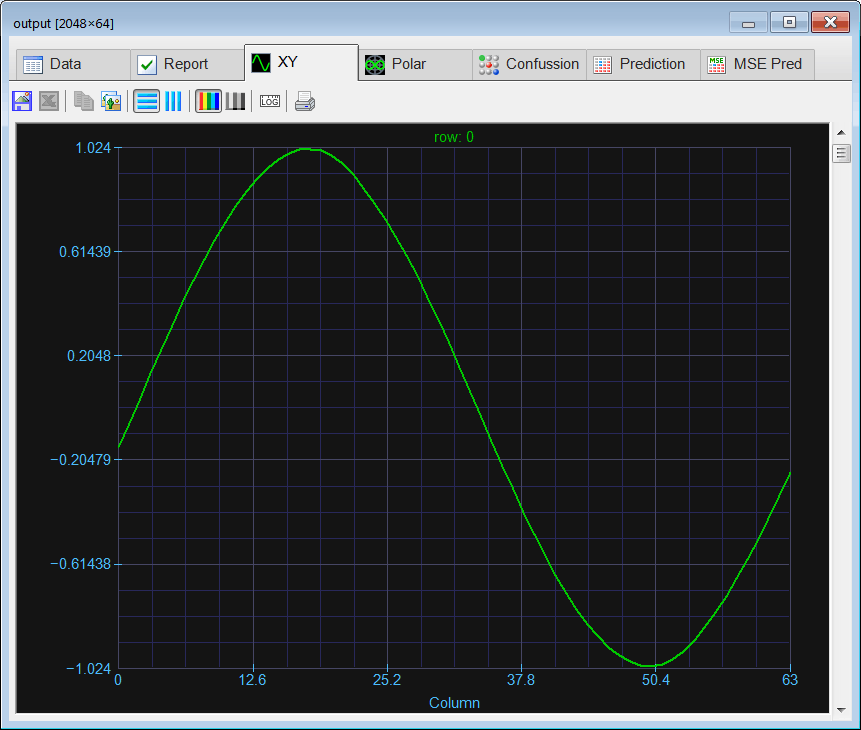int numInputs = 64;
int i;
//_________________________ 1. Network Setup
LayerNet net;
net.Create(numInputs, 14, 0, numInputs);
for(i = 0; i<numInputs; i++)
{
net.SetInScaler(i, -1.0, 1.0); // Input values are from -1.0 to 1.0
net.SetOutScaler(i, -1.0, 1.0); // Output values are from -1.0 to 1.0
}
//________________________ 2. Load and set the training set
Matrix trainSetInput;
trainSetInput.Load();
Matrix trainSetTarget;
trainSetTarget.Load();
net.SetTrainSet(trainSetInput, trainSetTarget, false);
//________________________ 3.Train
net.TrainSimAnneal(10, 10, 15, 0.001, true, 4, 1.0e-12);
net.TrainConjGrad(1000,1.0e-12);
//________________________ 4. Save the trained network
net.Save();
|
 Run click the button to execute the code. If you do not have any errors, the training set will be generated and displayed on the variable list and the file list. Click on the file to see its contents. The training set input is a noisy sine signal; the training set target is a clean sine signal of the same phase as the input.
Run click the button to execute the code. If you do not have any errors, the training set will be generated and displayed on the variable list and the file list. Click on the file to see its contents. The training set input is a noisy sine signal; the training set target is a clean sine signal of the same phase as the input. 